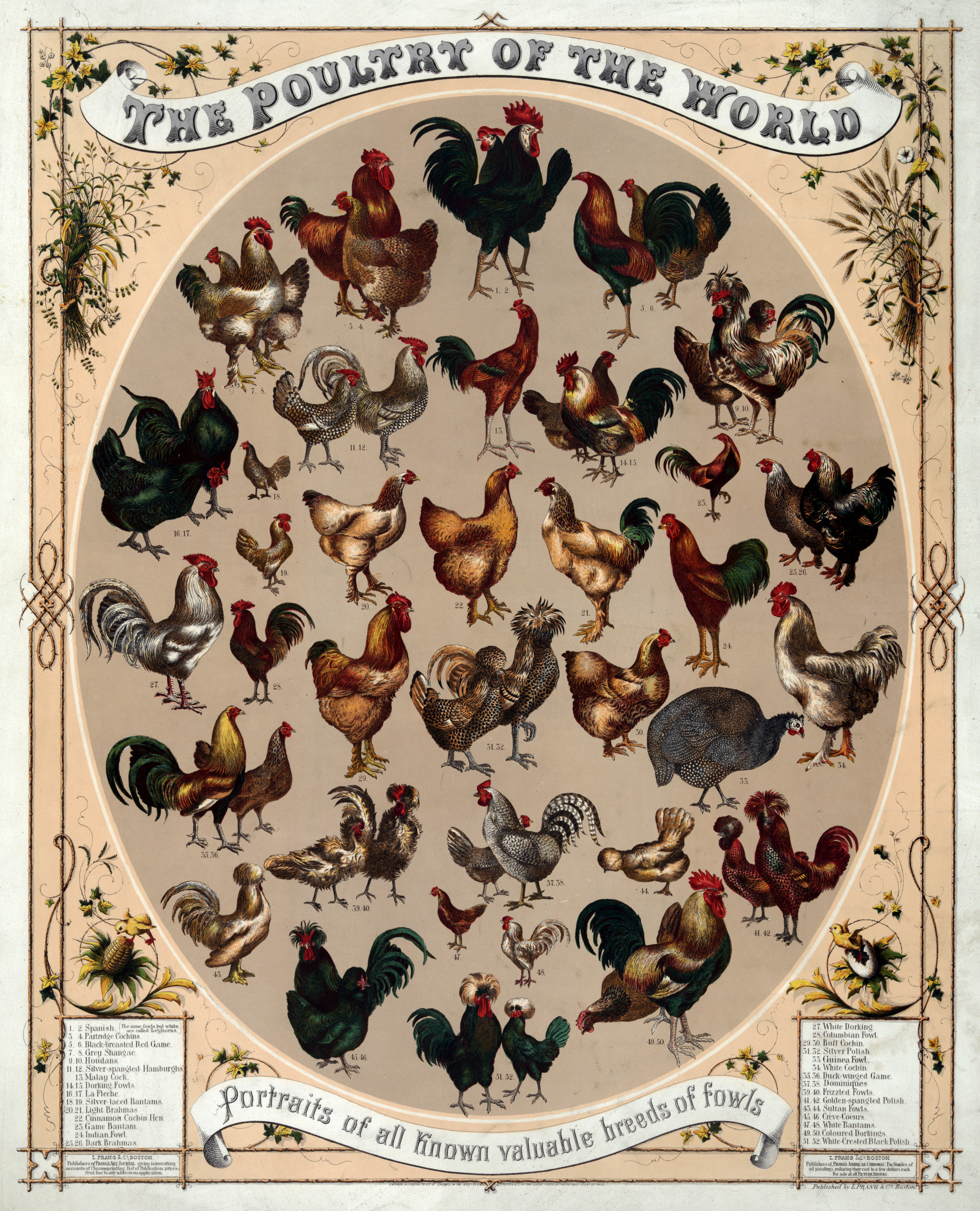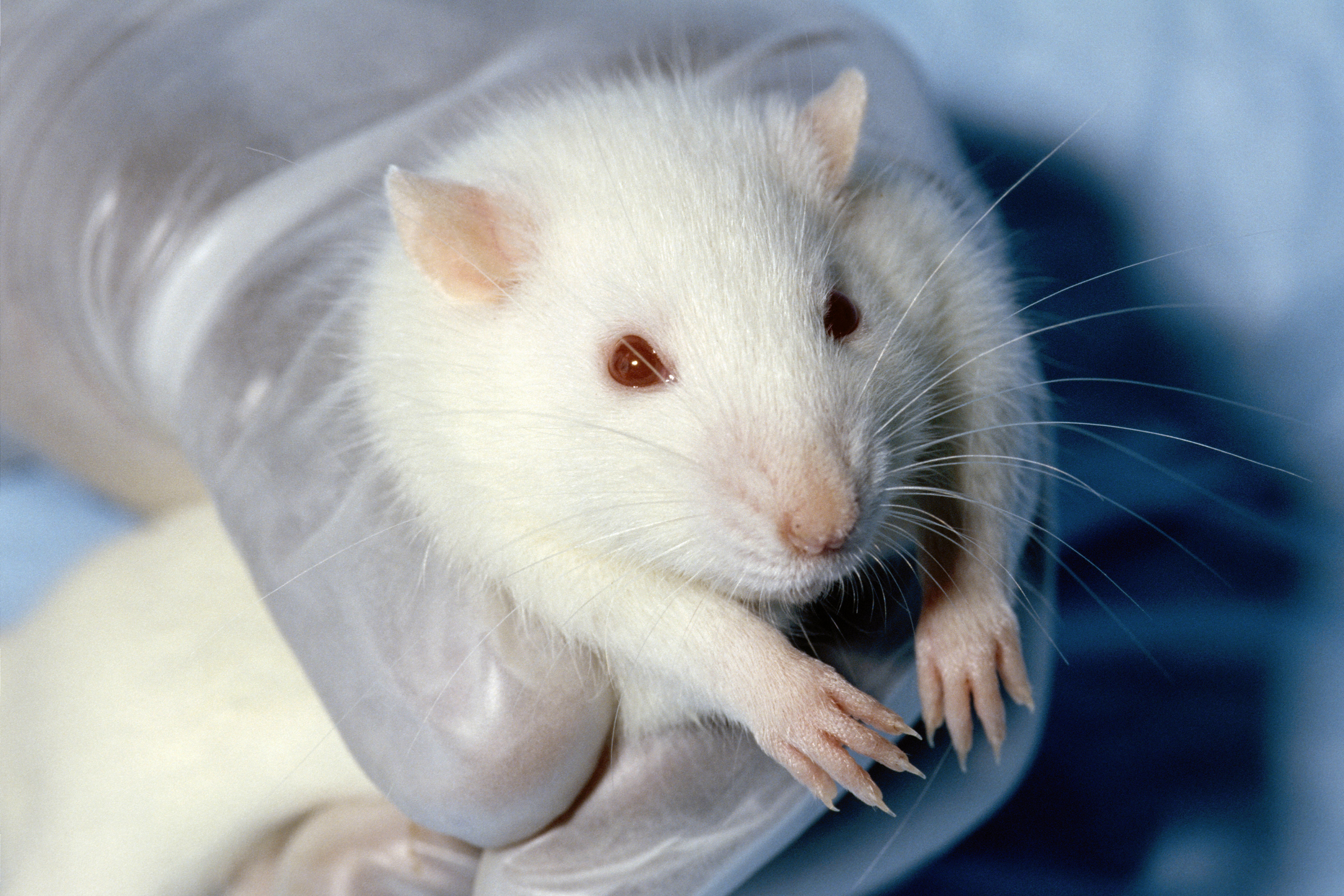|
Broiler
Breed broiler is any chicken (''Gallus gallus domesticus'') that is bred and raised specifically for meat production. Most commercial broilers reach slaughter weight between four and six weeks of age, although slower growing breeds reach slaughter weight at approximately 14 weeks of age. Typical broilers have white feathers and yellowish skin. Broiler or sometimes broiler-fryer is also used sometimes to refer specifically to younger chickens under , as compared with the larger roasters. Due to extensive breeding selection for rapid early growth and the husbandry used to sustain this, broilers are susceptible to several welfare concerns, particularly skeletal malformation and dysfunction, skin and eye lesions and congestive heart conditions. Management of ventilation, housing, stocking density and in-house procedures must be evaluated regularly to support good welfare of the flock. The breeding stock (broiler-breeders) do grow to maturity but also have their own welfare concerns ... [...More Info...] [...Related Items...] OR: [Wikipedia] [Google] [Baidu] |
Poultry Litter
In agriculture, poultry litter or broiler litter is a mixture of poultry excreta, spilled feed, feathers, and material used as bedding in poultry operations. This term is also used to refer to unused bedding materials. Poultry litter is used in confinement buildings used for raising broilers, turkeys and other birds. Common bedding materials include wood shavings, sawdust, peanut hulls, shredded sugar cane, straw, and other dry, absorbent, low-cost organic materials. Sand is also occasionally used as bedding. The bedding materials help absorb moisture, limiting the production of ammonia and harmful pathogens. The materials used for bedding can also have a significant impact on carcass quality and bird performance. There are specific practices that must be followed to properly maintain the litter and maximize the health and productivity of the flocks raised on it. Many factors must be considered in successful litter management including time of the year, depth of the litter, f ... [...More Info...] [...Related Items...] OR: [Wikipedia] [Google] [Baidu] |
Chicken
The chicken (''Gallus gallus domesticus'') is a domesticated subspecies of the red junglefowl (''Gallus gallus''), originally native to Southeast Asia. It was first domesticated around 8,000 years ago and is now one of the most common and widespread domesticated animals in the world. Chickens are primarily kept for chicken as food, their meat and egg as food, eggs, though they are also kept as pets. As of 2023, the global chicken population exceeds 26.5 billion, with more than 50 billion birds produced annually for consumption. Specialized breeds such as broilers and laying hens have been developed for meat and egg production, respectively. A hen bred for laying can produce over 300 eggs per year. Chickens are social animals with complex vocalizations and behaviors, and cultural references to chickens, feature prominently in folklore, religion, and literature across many societies. Their economic importance makes them a central component of global animal husbandry and agricu ... [...More Info...] [...Related Items...] OR: [Wikipedia] [Google] [Baidu] |
Feed Conversion Ratio
In animal husbandry, feed conversion ratio (FCR) or feed conversion rate is a ratio or rate measuring of the efficiency with which the bodies of livestock convert animal feed into the desired output. For dairy cows, for example, the output is milk, whereas in animals raised for meat (such as beef cows,Dan Shike, University of IllinoiBeef Cattle Feed Efficiency/ref> pigs, chickens, and fish) the output is the flesh, that is, the body mass gained by the animal, represented either in the final mass of the animal or the mass of the dressed output. FCR is the mass of the input divided by the output (thus mass of feed per mass of milk or meat). In some sectors, feed efficiency, which is the output divided by the input (i.e. the inverse of FCR), is used. These concepts are also closely related to efficiency of conversion of ingested foods (ECI). Background Feed conversion ratio (FCR) is the ratio of inputs to outputs; it is the inverse of "feed efficiency" which is the ratio of outpu ... [...More Info...] [...Related Items...] OR: [Wikipedia] [Google] [Baidu] |
Cornish Game
Cornish game hen (also Rock Cornish game hen) is the USDA-approved name for a particular variety of broiler chicken, produced from a cross between the Cornish and White Plymouth Rock chicken breeds, that is served young and immature, weighing no more than two pounds (900 g) ready to cook."What is a Cornish Hen?" . Accessed July 2011. [...More Info...] [...Related Items...] OR: [Wikipedia] [Google] [Baidu] |
Poultry
Poultry () are domesticated birds kept by humans for the purpose of harvesting animal products such as meat, Eggs as food, eggs or feathers. The practice of animal husbandry, raising poultry is known as poultry farming. These birds are most typically members of the superorder Galloanserae (fowl), especially the order Galliformes (which includes chickens, quails, and domestic turkey, turkeys). The term also includes waterfowls of the family Anatidae (ducks and geese) but does not include wild birds hunted for food known as game (hunting), game or wild meat, quarry. Recent genomic studies involving the four extant junglefowl species reveals that the domestication of chicken, the most populous poultry species, occurred around 8,000 years ago in Southeast Asia. This was previously believed to have occurred around 5,400 years ago, also in Southeast Asia. The process may have originally occurred as a result of people hatching and rearing young birds from eggs collected from the wild, ... [...More Info...] [...Related Items...] OR: [Wikipedia] [Google] [Baidu] |
Meat
Meat is animal Tissue (biology), tissue, often muscle, that is eaten as food. Humans have hunted and farmed other animals for meat since prehistory. The Neolithic Revolution allowed the domestication of vertebrates, including chickens, sheep, goats, pigs, horses, and cattle, starting around 11,000 years ago. Since then, selective breeding has enabled farmers to produce meat with the qualities desired by producers and consumers. Meat is mainly composed of water, protein, and fat. Its quality is affected by many factors, including the genetics, health, and nutritional status of the animal involved. Without preservation, bacteria and fungi decompose and Meat spoilage, spoil unprocessed meat within hours or days. Meat is Raw meat, edible raw, but it is mostly eaten cooked, such as by stewing or roasting, or Processed meat, processed, such as by Smoking (cooking), smoking or Salting (food), salting. The consumption of meat (especially Red meat, red and processed meat, as opposed ... [...More Info...] [...Related Items...] OR: [Wikipedia] [Google] [Baidu] |
Meat Atlas 2014 Estimated Chicken Consumption
Meat is animal tissue, often muscle, that is eaten as food. Humans have hunted and farmed other animals for meat since prehistory. The Neolithic Revolution allowed the domestication of vertebrates, including chickens, sheep, goats, pigs, horses, and cattle, starting around 11,000 years ago. Since then, selective breeding has enabled farmers to produce meat with the qualities desired by producers and consumers. Meat is mainly composed of water, protein, and fat. Its quality is affected by many factors, including the genetics, health, and nutritional status of the animal involved. Without preservation, bacteria and fungi decompose and spoil unprocessed meat within hours or days. Meat is edible raw, but it is mostly eaten cooked, such as by stewing or roasting, or processed, such as by smoking or salting. The consumption of meat (especially red and processed meat, as opposed to fish and poultry) increases the risk of certain negative health outcomes including cancer, cor ... [...More Info...] [...Related Items...] OR: [Wikipedia] [Google] [Baidu] |
Plymouth Rock Chicken
The Plymouth Rock is an American breed of domestic chicken. It was first seen in Massachusetts in the nineteenth century and for much of the early twentieth century was the most widely kept chicken breed in the United States. It is a dual-purpose bird, raised both for its meat and for its brown eggs. It is resistant to cold, easy to manage, and a good sitter. History The Plymouth Rock was first shown in Boston in 1849, but was then not seen for another twenty years. In 1869, in Worcester, Massachusetts, one D.A. Upham cross-bred some Black Java hens with a cock with barred plumage and a single comb; he selectively bred for barred plumage and clean (featherless) legs. His birds were shown in Worcester in 1869; the modern Plymouth Rock is thought to derive from them. Other people have been associated with the development of the Plymouth Rock, as have other chicken breeds including the Brahma, the Cochin (both white and buff), the Dominique and the White-faced Black Spa ... [...More Info...] [...Related Items...] OR: [Wikipedia] [Google] [Baidu] |
Jersey Giant
The Jersey Giant is an American breed of domestic chicken. It was created in Burlington County, New Jersey, in the late nineteenth century. It is among the heaviest of all chicken breeds.Jersey Giant Chicken American Livestock Breeds Conservancy. History The Jersey Giant was created by John and Thomas Black, with the intent of replacing the turkey, the kind of poultry used primarily for meat at the time. It was produced by crossing black Javas, black Langshans, and dark Brahmas, and was added to the |
Cruelty To Animals
Cruelty to animals, also called animal abuse, animal neglect or animal cruelty, is the infliction of suffering or Injury, harm by humans upon animals, either by omission (neglect) or by commission. More narrowly, it can be the causing of harm or suffering for specific achievements, such as killing animals for food or entertainment; cruelty to animals is sometimes due to a mental disorder, referred to as zoosadism. Divergent approaches to Animal rights by country or territory, laws concerning animal cruelty occur in different jurisdictions throughout the world. For example, some laws govern methods of killing animals for food, clothing, or other products, and other laws concern the keeping of animals for entertainment, education, research, or pets. There are several conceptual approaches to the issue of cruelty to animals. Even though some practices, like animal fighting, are widely acknowledged as cruel, not all people or cultures have the same definition of what constitutes an ... [...More Info...] [...Related Items...] OR: [Wikipedia] [Google] [Baidu] |
Indian Game (poultry)
The Indian Game is a British breed of game chicken, now reared either for meat or show. It originated in the early nineteenth century in the counties of Cornwall and Devon in south-west England. It is a heavy, muscular bird with an unusually broad breast; the eggs are light brown. In the United States the name was changed in the early twentieth century to Cornish. A white variant, the White Cornish, was developed there at about the same time, and is much used in modern industrial chicken meat production in many parts of the world, either for cross-breeding to produce hybrid broilers, or to produce fast-growing " game hens". History The breed was developed by Sir Walter Gilbert, of Bodmin in Cornwall, in about 1820. It was intended to be a gamecock, but had no aptitude for cockfighting. It is recognised as "Indian Game" in Australia, by the Poultry Club of Great Britain in the United Kingdom, and by the Entente Européenne in Europe. In the United States the name wa ... [...More Info...] [...Related Items...] OR: [Wikipedia] [Google] [Baidu] |






